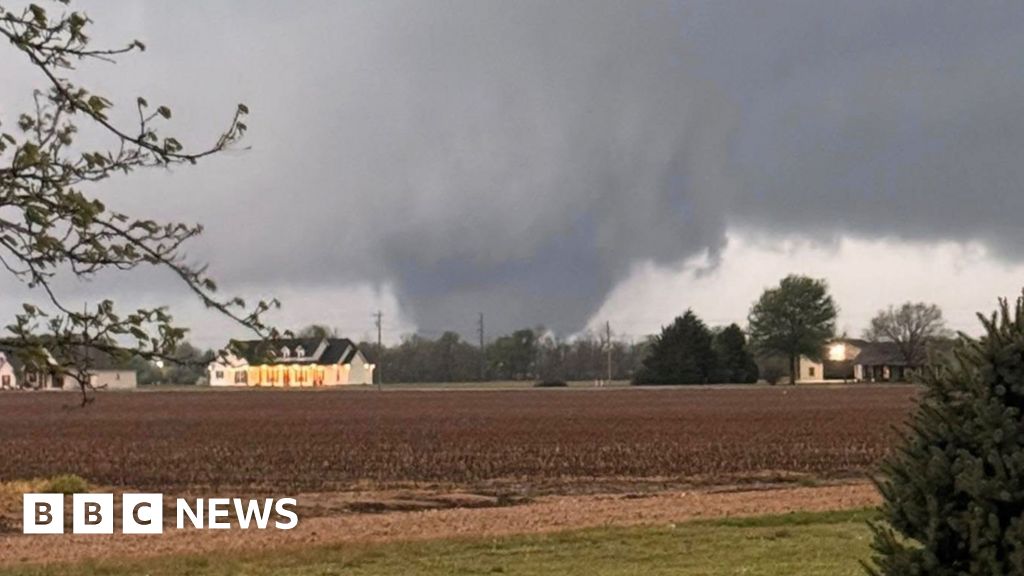ARTICLE AD BOX
Watch: Texas deploys buoys on Rio Grande to deter migrants
By Bernd Debusmann Jr
BBC News, Washington
Texas officials have begun installing a floating barrier along the banks of the Rio Grande river, which they argue will deter migrants from crossing into the US from Mexico.
Immigrant advocates say it may be ineffective and potentially dangerous to migrants.
The barrier, made of large orange buoys, is already the subject of a lawsuit from a local kayak company.
Officials say the barrier will help secure the US-Mexico border.
First announced in June, the floating barrier is eventually expected to cover about 305 metres (1,000) feet of the river.
The buoys will be connected with webbing and anchored to the bottom of the river near the town of Eagle Pass, which has seen about 270,000 migrant detentions this fiscal year.
"We always look to employ whatever strategies will be effective in securing the border," Texas governor Greg Abbott said of the barrier at an 8 June news conference.
On Twitter, Texas Department of Public Safety spokesperson Chris Olivarez said that installation began on 10 July. Setting up the barriers may take up to two weeks.
Researchers and advocates who study the border have questioned whether it will have any meaningful impact on the number of migrants who attempt to cross or dissuade them from trying.
"This is pure theatre," said Adam Isacson, a migration and border expert from the Washington Office on Latin America. "It's less than a speed bump, ultimately, but it looks great for cameras."
The BBC has reached out to Texas officials for comment.
Speaking to reporters in June, Texas DPS director Steven McCraw said that the barriers would be a "deterrent" to migrants getting in the river, where migrants drown or are rescued regularly.
Adriana Martinez, a professor at Southern Illinois University who has researched the impact of projects on the Rio Grande - and is a native of Eagle Pass - said the barriers will likely result in changing the flow of the river, potentially making it more dangerous for migrants crossing.
"It certainly is going to make the water act unexpectedly," she said. "And who knows what it's going to do once the water gets higher."
Image source, Getty Images
Image caption,About 270,000 migrants have been detained in the Eagle Pass sector this fiscal year
Ms Martinez added that tree branches and other debris might get stuck in the netting or under the buoys, potentially creating a hazard for migrants.
Justine Ochoa, a Texas-based Nicaraguan activist, said that the barrier may also drive migrants to more "inhospitable" parts of the river. The organisation she works for, Texas Nicaraguans, regularly helps repatriate the remains of Nicaraguan citizens who drown in the Rio Grande.
"They will look for more dangerous areas," said Ms Ochoa.
Last Friday, the owner of a local kayak tour operator filed a lawsuit against Texas government over the buoys, arguing that it will damage his business and destroy local ecosystems.
"I hope my lawsuit extends the message that we need to be together in how we promote for our state, for our communities, for our rural area. How to prosper," Jesse Fuentes, the owner of Epi's Canoe and Kayak Team, told the BBC's US partner, CBS. "There should be no hindrance."
In a tweet, Mr Abbott responded by saying that "we will see you in court" and that "Texas has a constitutional right to protect our border".

 1 year ago
60
1 year ago
60








 English (US) ·
English (US) ·